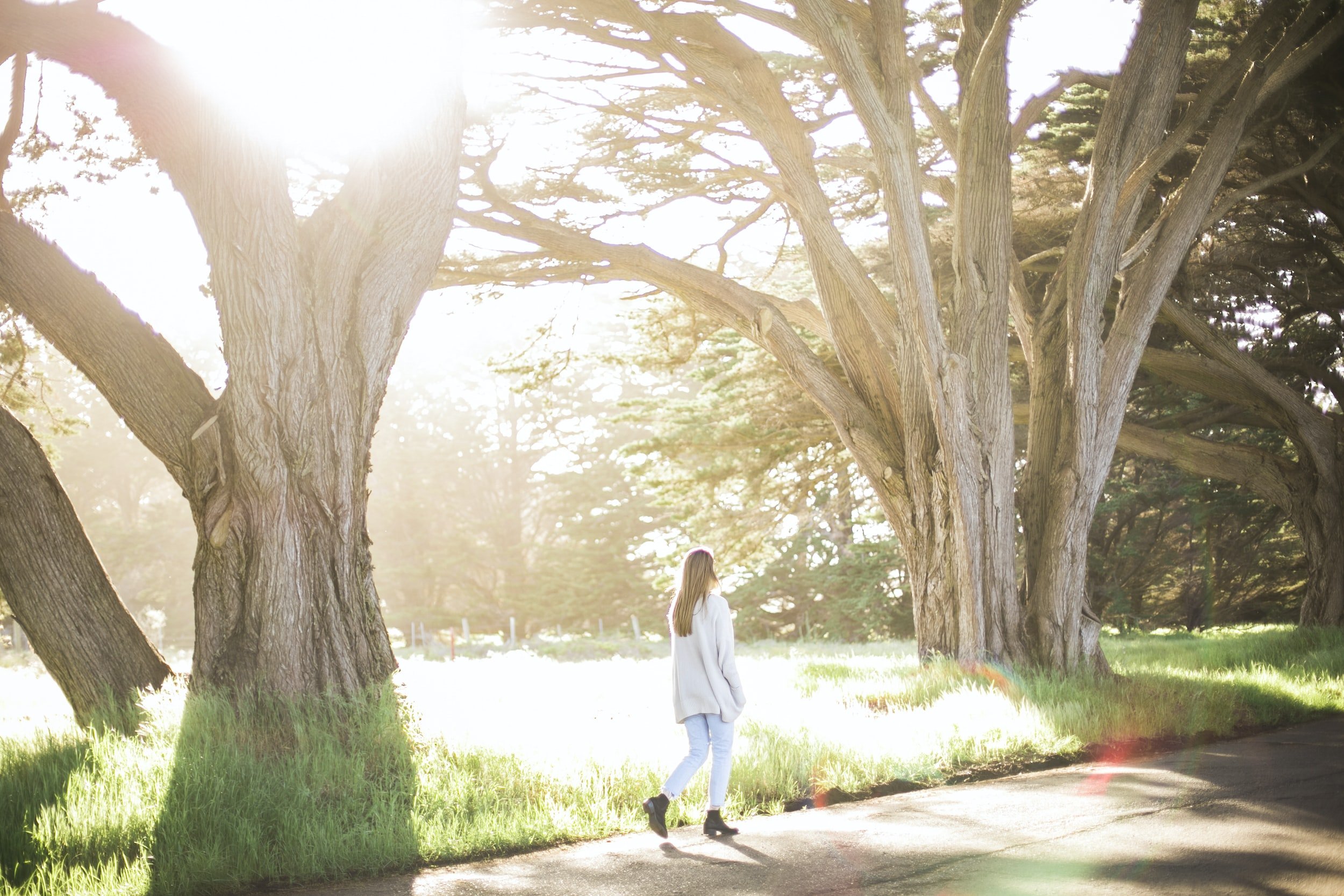Connect with me!
Tell me the number one thing that you want to understand about your pain?

Turning Toward Discomfort
If you’ve been following along, it probably feels like there’s been A LOT of thinking and talking that has to happen before adding movement to your life. We’ve talked about so many of the different barriers, some of the education necessary, and understanding why you hurt in the first place.
The barriers we’ve discussed (pain, fatigue, lack of education, lack of support, unhelpful thoughts, and avoidance behaviors) can interfere with just about any new habit or activity you might start, so it’s important to recognize them. We want to make any headway that we can toward your goals and values, the things that matter to you.
It’s also important to understand HOW to add movement or new activity (or old activities) into your life. While we can’t follow a step-by-step system ALL of the time (you can’t do everything and life is unpredictable), having a plan can set you up for more success when life (or pain) gets in the way and its harder to do things the way you want to do them.
There’s not a perfect way to cope with pain or to incorporate movement, but a plan will get you there a lot quicker than letting your pain take the driver’s seat.
I’d like for you to think about movement and activity and how that fits into the larger view of your life now. Is it the LAST thing you want to do (and do do) when you feel anxious, stressed, low self-esteem, in pain, tired, and helpless? OR is it a go-to coping skill, so much so that you push through, looking for a high, just to crash for days after? Or maybe you’re scared and avoidant. Maybe you’ve had negative experiences with movement, exercise, or even PT.
I find that, most of the time, the activities recommended might be tailored to someone’s diagnosis, but not to their unique psychological (mental state), physical (energy state), and sociological (desired social activity level). Maybe what was recommended to you in the past, or what you’ve tried in the past, wasn’t dosed correctly for your mental state, your level of fatigue, your attitude toward movement, or the social context in which you are trying to engage in activity.
Dosage is important here. Why? Because the goal is to get you doing something safe (remember, we want to communicate safety to our brain), without a flare-up, in small bits, that is sustainable. This goal has to be flexible, tailored by you to your goals and values, and adaptable on more challenging days. In your plan, you need to be able to connect your body and your mind, be knowledgable of your barrieres, your roles and responsibilities, your boundaries, and have a commitment to moving forward by TRYING something new. By turning toward discomfort.
How do we do this?
We become more aware of our current experience by taking a helicopter view of our day. I’ve got a really cool freebie to help you do this, but I only give it out when you attend my webinar live ;) Be curious about your day and your body. Be willing to listen to your body, learn your baseline, determine what your boundaries are, and honor your own needs. Boy is this difficult for those of us who tend toward people pleasing and have a hard time saying “no”.
Understand your relationship with movement. This might take a little digging and looking at how your pain cycle has played out over your years of chronic pain. What have you felt like, physically and emotionally, with different amounts and types of movement? What else was going on in your day/life at the time? How did this impact your overall view of activity? How does that feed into your current attitude about activity? Do you approach coping with your pain actively? or more passively?
Be aware of unhelpful thoughts related to movement. These thoughts probably came out as you were answering the questions to #2. What are the worst case scenario thoughts you have about movement? What activities trigger bodily reactions just by thinking about them? Which activities and movements do you worry about the most?
What is your baseline? Where can you start NOW? Is it walking to the mailbox and back? Is it 5 minutes of playing your guitar? Is it 2 minutes of knitting? Where can you start with a valued activity without flaring up your pain? Can you accept this as a starting point?
I’m willing to bet that no one has sat with you and helped you understand your relationship with movement and how that may be impacting how you move now AND how you cope with your pain?
I have a few things to help with this:
A free quiz - it will help you understand your coping style better, complete with tips for next steps forward.
A free video tutorial to get you started dedicated to helping women with pain begin to find confidence to return to the moments, activities, and people they love the most.
Ready for something more? I have a digital course that provides a step-by-step system to incorporate EVERYTHING you need to reengage in your valued activities, including movement, and design your days so that they work for you… without the flareups and crashes. I’ll run the educational sessions live in January and provide digital downloads (and bonuses!) as part of this offering. You can learn more here.
Change is hard. Overcoming pain takes openness, leaning toward discomfort (but not too much!) and persistence. I’m aiming to provide the education that you need to fuel you forward, but you have to be ready. Are you ready?
BACK PAINCAN FEMALES HANDLE MORE PAINCHRONIC PAINCHRONIC PAIN CYCLECHRONIC PAIN JOINTSCHRONIC PAIN MANAGEMENTCHRONIC PAIN HELPCHRONIC PAIN NECK AND BACKCHRONIC PAIN RELIEFCHRONIC
© 2024 | Anna Redmond, LLC | drannaredmond.com
